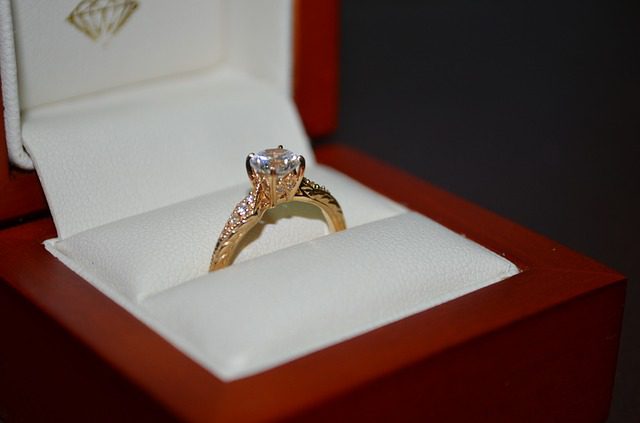
What if —
the engagement ring, as we know it today, disappeared?
Thanks to clever marketing by De Beers, men have been told that they ought to be spending 3 months’ pay on a ring; according to theknot.com, as reported in USA Today, the actual average spend in 2013 was about $6,000, and the average ring size was 1 karat. (How reliable are these numbers? Bear in mind that these are the same folks that overstate the cost of weddings, and take it with a grain of salt.)
My ring? Bought when my husband and I were both in grad school — it’s a quarter-karat. We’ve talked, in the meantime, about getting a larger ring, but I’ve never really felt the need.
But here’s the latest, from Bloomberg News, as syndicated in my local paper and here online: “Why De Beers Lab Near London Makes Diamonds It Will Never Sell” —
Scientists at De Beers can make near- flawless diamonds in a lab, but they will never sell you one.
The 127-year-old mining company’s Element Six unit, named for the carbon atom’s rank on the periodic table, makes gems that are as perfect as any found at Tiffany & Co. stores, yet their destination is a 1980s office complex on the edge of London. There, a team of 62 studies their creations and develops machines for diamond buyers trying to spot synthetic stones being peddled as the real thing. . . .
About 360,000 carats of man-made gems were produced last year, compared with 126 million carats of natural diamonds. Synthetic production, fueled by increased demand from retailers for cheaper alternatives, probably will jump to 2 million carats in 2018 and 20 million carats by 2026, according to researcher Frost & Sullivan.
The rest of the article discusses the extensive efforts to counter the selling of man-made diamonds as if they were natural mined diamonds, a task made increasingly difficult because the former is now indistinguishable from the latter without sophisticated processes.
The entire diamond industry is predicated on the gem’s rarity. What’s more, when it comes to buyers of engagement rings in the United States, making a sale of a $6,000 ring depends on convincing the customer that spending less by choosing a man-made diamond (regardless of whether anyone can tell the difference) is insufficient proof of one’s love, and is either deceitful or just plain tacky and tasteless, besides.
But there are people out there marketing man-made, er, Lab Created diamonds; a google search brings up MiaDonna, which markets their wares as ” the only true conflict-free option.” Kohl’s has ’em too. Maybe the young ‘uns are adopting this more widely than I know.
So: what if?












